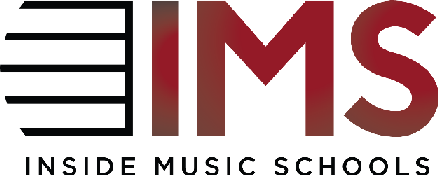by Steven Lipman
Are you wondering how hard it is to get into a top music college or conservatory? Whether you dream of attending Juilliard, Berklee, or Eastman, understanding the acceptance rates for music schools in the U.S. is a great place to start.
Admissions at music schools are highly competitive and vary significantly depending on the institution, your primary instrument or course of study, and the program. Below, you’ll find a comprehensive breakdown of acceptance rates at leading U.S. music conservatories, universities, and colleges with strong music programs, updated for 2025.
ce rate.
Why Acceptance Rates Matter When Choosing a Music School
Acceptance rate refers to the percentage of applicants an institution admits in a given year. While lower acceptance rates typically signal greater prestige or selectivity, they don’t tell the full story — especially for music schools.
Further, the “acceptance rate” you find for a school is an average of the rates for all students. Admissions departments might accept students more or less frequently for specific instruments, musical genres, and particular majors.

Key Factors That Influence Acceptance Rates at Music Colleges:
Primary instrument or voice type: Some instruments are in higher demand to round out ensembles. For instance, a school may have fewer qualified trombonist applicants and accept a higher percentage in that category.
Type of music program: Classical voice, jazz performance, composition, music business, and production programs can all have differing selectivity.
Enrollment size and mission: Small conservatories like Curtis accept fewer students overall, while larger universities may offer more spots across diverse programs.
Your acceptance chances will depend not just on GPA or test scores, but also on your audition, artistic portfolio, repertoire, and sometimes interviews and essays.
Still, knowing the general acceptance rate at a college of choice serves as a great first step in determining the right school for you. That’s why we at Inside Music Schools put together this multi-tiered list of the acceptance rates of many top schools around the country.
Acceptance Rates at Top U.S. Conservatories and Music Colleges
The following institutions are devoted almost exclusively to music education and performance.
I’ve divided this list into two categories. You’ll find conservatories and music colleges under one and universities with truly stellar music departments under the other.
- Curtis Institute of Music – 3%
- Philadelphia, Pennsylvania
- The Juilliard School – 5%
- New York, New York
- Colburn Conservatory of Music – 7%
- Los Angeles, California
- Oberlin College and Conservatory – 25%
- Oberlin, Ohio
- University of Cincinnati College & Conservatory – 26%
- Cincinnati, Ohio
- Mannes School of Music – 33%
- New York, New York
- New England Conservatory – 33%
- Boston, Massachusetts
- Boston Conservatory – 42%
- Boston, Massachusetts
- Manhattan School of Music – 43%
- New York, New York
- Cleveland Institute of Music – 43%
- Cleveland, Ohio
- San Francisco Conservatory of Music – 44%
- San Francisco, California
- The Peabody Institute at Johns Hopkins University – 52%
- Baltimore, Maryland
- Berklee College of Music – 53%
- Boston, Massachusetts
- Shenandoah Conservatory – 70%
- Winchester, Virginia
Top Universities and Colleges with Strong Music Departments
These schools offer excellent music programs within a broader liberal arts or research university structure.
Music Schools with Under 50% Acceptance Rate
- Northwestern University Bienen School of Music – 10%
- Evanston, Illinois
- University of Rochester Eastman School of Music – 13%
- Rochester, New York
- The Shepherd School of Music at Rice University – 15%
- Houston, Texas
- Bard College Conservatory of Music – 15%
- Annandale-on-Hudson, New York
- Longy School of Music of Bard College – 88%
- Cambridge, Massachusetts
- University of Southern California Thornton School of Music – 20%
- Los Angeles, California
- Vanderbilt University Blair School of Music – 20%
- Nashville, Tennessee
- Indiana University Jacobs School of Music – 25%
- Bloomington, Indiana
- Boston University – 25%
- Boston, Massachusetts
- New World Symphony Orchestral Academy – Low Accept Rate
- Miami, Florida
- University of Michigan – 26%
- Ann Arbor, Michigan
- University of North Carolina School of the Arts – 33%
- Winston-Salem, North Carolina
- University of Texas at Austin Butler School of Music – 35%
- Austin, Texas
- University of Miami Frost School of Music – 40%
- Coral Gables, Florida
- Syracuse University Setnor School of Music – 47%
- Syracuse, New York
Music Schools with Over 50% Acceptance Rate:
- University of Denver Lamont School of Music – 58%
- Denver, Colorado
- Temple University – 59%
- Philadelphia, Pennsylvania
- State University of New York at Potsdam Crane School of Music – 60%
- Potsdam, New York
- Lawrence University – 62%
- Appleton, Wisconsin
- DePauw University – 67%
- Greencastle, Indiana
- Ithaca University – 69%
- Ithaca, New York
- The Hartt School at the University of Hartford – 75%
- West Hartford, Connecticut
- VanderCook College of Music (Music Education only) – 99%
- Chicago, Illinois
Beyond the Numbers: Find Your Best-Fit Music School with Expert Guidance
Acceptance rates offer helpful context, but they don’t tell the full story of how competitive or compatible a school may be for you. Your chances of getting in depend not just on the institution, but also on your instrument, musical background, audition preparation, and goals.
That’s where we come in.
At Inside Music Schools, we work one-on-one with musicians to identify schools that align with their talents and aspirations — then help them prepare every step of the way, from building a school list to polishing auditions and portfolios.
Not sure where you stand or how to improve your odds?
Let’s talk about your options and map out a personalized admissions strategy tailored to your strengths.
FAQs: Music School Acceptance Rates & Admissions
What is the hardest music school to get into?
The Curtis Institute of Music has the lowest acceptance rate at around 3%, making it the most selective music conservatory in the U.S.
Which music schools are easier to get into?
Schools like VanderCook College of Music, Hartt School, and Ithaca College have acceptance rates over 65%, making them more accessible to qualified applicants.
Do acceptance rates differ by instrument?
Yes! Admissions are often instrument-specific. For example, there may be a higher acceptance rate for tuba, bassoon, or double bass due to fewer applicants, while violin and piano are typically more competitive.
Are music school admissions based only on auditions?
No. While your audition or portfolio carries the most weight, other factors like academics, interviews, essays, and teacher recommendations also matter — especially at universities with holistic admissions.
What GPA do I need to get into a music college?
It depends. Conservatories may have more flexible GPA requirements, focusing primarily on talent. University music departments (like Northwestern or Michigan) often require strong academic records in addition to musical excellence.
Founder & President at Inside Music Schools | Insidemusicschools.com
Head of admissions and faculty member at Berklee College of Music for 40 years, Steve Lipman and our team at Inside Music Schools speak music as their primary language. We approach each client contact with open eyes, ears, and minds. As the country’s premier music school consultant, he has advised students from the United States, Canada, the U.K., India, Singapore, Dubai, China, Australia, Turkey, Colombia, Argentina, Brazil, Japan, Israel, Italy, Russia and elsewhere.

